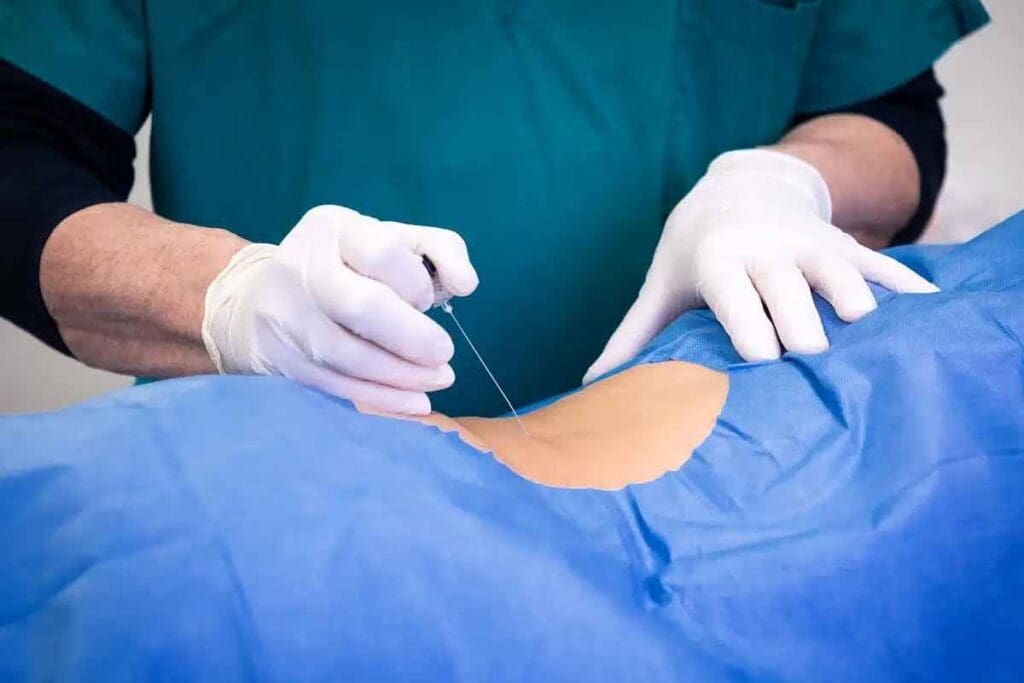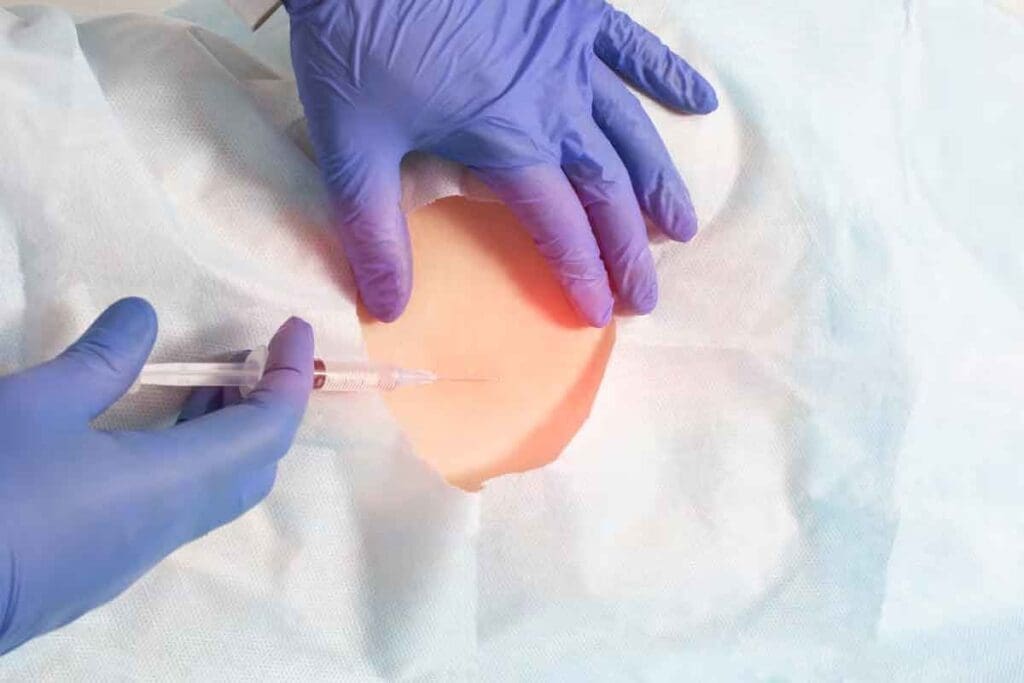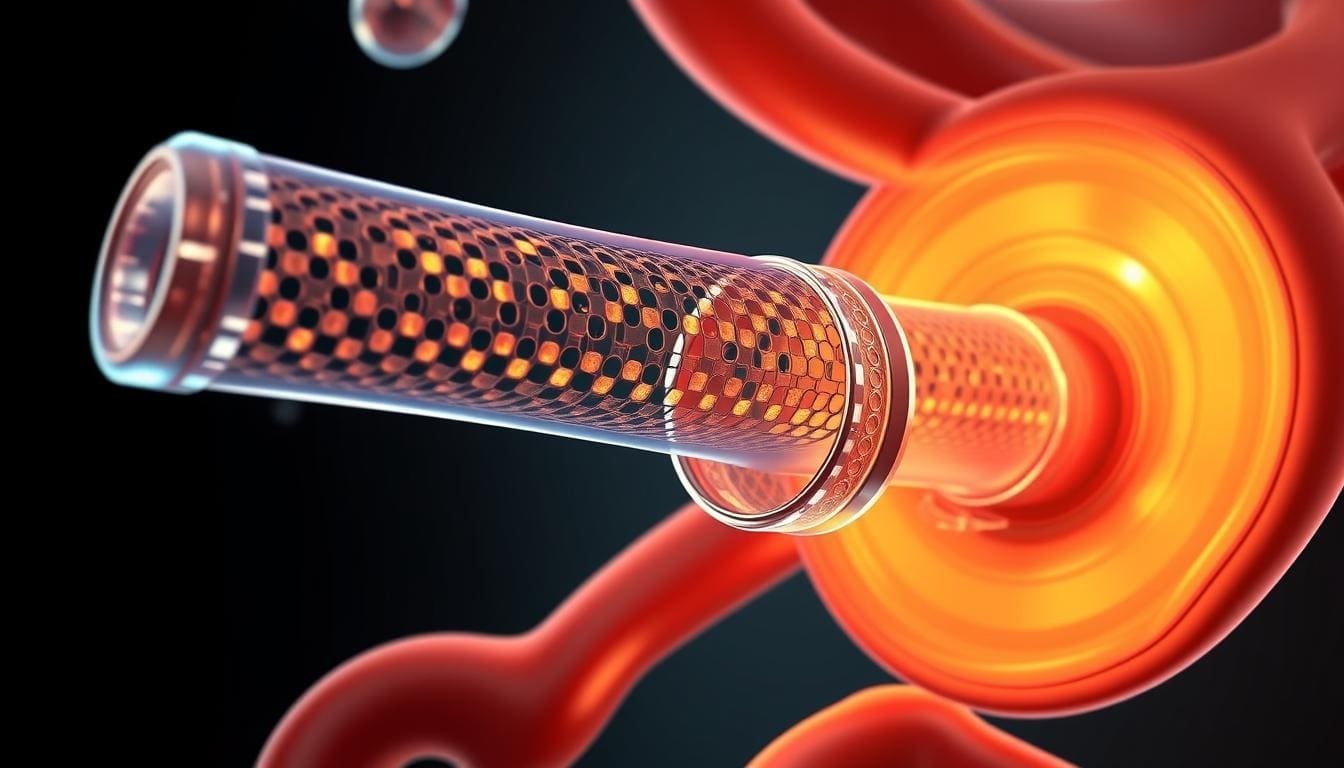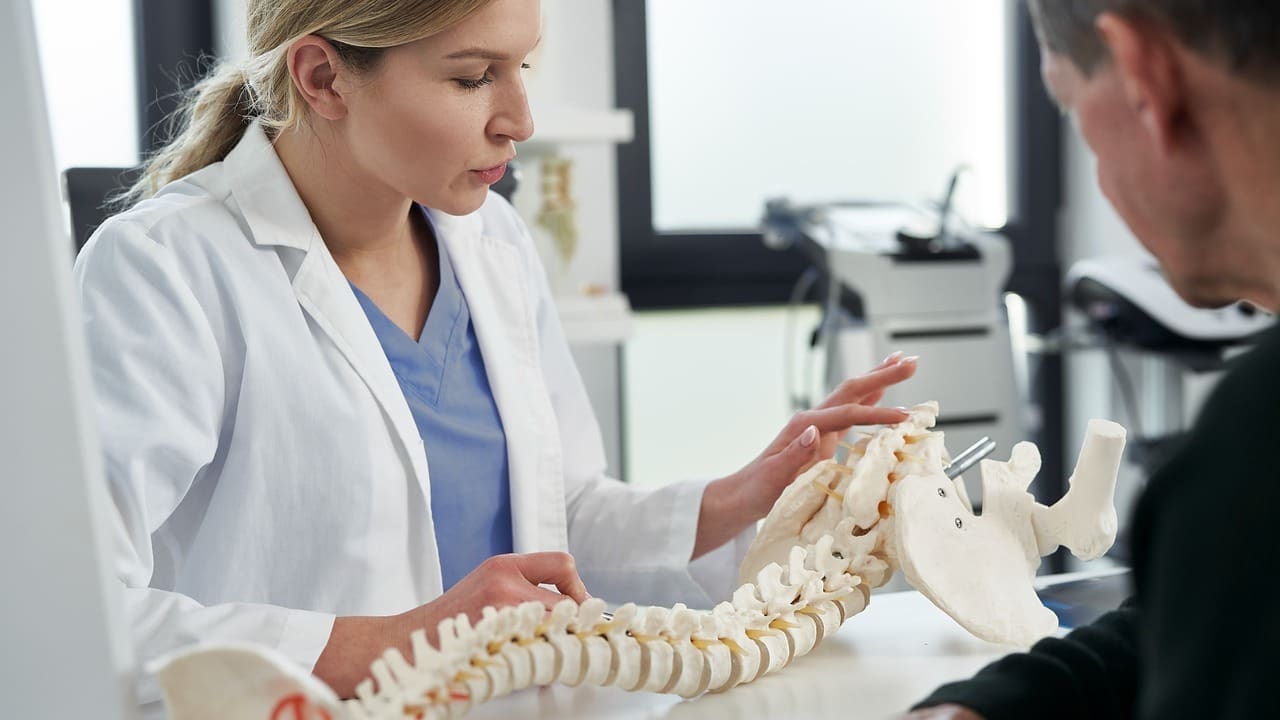Last Updated on November 26, 2025 by Bilal Hasdemir

Discover cortisone injection back recovery time, what affects healing, and how to relieve soreness. At Liv Hospital, we know how important relief from back pain is to our patients. If you’re thinking about an epidural corticosteroid injection, you might wonder how long it takes to get better. Many patients want to get back to their usual activities quickly.
The good news is that recovery time is usually short. Most people say it takes a few hours for feeling to come back after an epidural injection. On average, back recovery time after a cortisone epidural steroid injection is a few days to a week.
Key Takeaways
- Epidural corticosteroid injections can provide effective back pain relief.
- Recovery time varies, but most patients can resume normal activities within a few days.
- It’s essential to follow post-injection care instructions to ensure a smooth recovery.
- Our team at Liv Hospital is committed to providing personalized care and support throughout your recovery journey.
- Understanding what to expect after the procedure can help alleviate concerns and promote a positive outcome.
Understanding Epidural Corticosteroid Injections

Epidural corticosteroid injections are a treatment that puts steroids near the spinal cord. This helps reduce inflammation and eases pain. They are key for managing back pain from different spinal issues.
What Are Epidural Steroid Injections?
Epidural steroid injections help with pain from inflamed spinal nerves. A corticosteroid is injected into the space around the spinal cord. Corticosteroids are strong anti-inflammatory medicines that lessen swelling and irritation.
They are often used for herniated discs, spinal stenosis, and sciatica. By focusing on the inflamed areas, these injections can greatly reduce pain. For more on aftercare, check out this resource.
How These Injections Target Spinal Inflammation
The main goal of epidural corticosteroid injections is to cut down inflammation around the spinal nerves. When nerves are inflamed, they can cause pain, numbness, or weakness. By putting corticosteroids in the epidural space, these injections target the inflammation source.
The corticosteroids in these injections calm the immune system, reducing inflammation and swelling. This can lessen pain and improve movement for patients. It’s important to remember that these injections are part of a bigger treatment plan. This plan may include physical therapy, exercise, and other treatments.
Common Back Conditions Treated with Epidural Steroid Injections
Epidural corticosteroid injections are a common treatment for back pain. They work well for conditions that cause inflammation and nerve irritation.
Herniated Discs and Sciatica
Herniated discs happen when the soft center of the disc leaks out. This can irritate nerves, causing pain, numbness, and weakness in the back and legs. This is known as sciatica. Sciatica is often seen with herniated discs, and these injections can help reduce inflammation and provide relief.
A study in the Journal of Neurosurgery: Spine found that these injections greatly improved symptoms. They were most effective in reducing leg pain and improving how well patients could function.
Spinal Stenosis and Nerve Compression
Spinal stenosis is another condition helped by these injections. It involves the narrowing of the spinal canal, putting pressure on nerves. This can cause pain, numbness, and weakness in the back, legs, and buttocks. The injections reduce inflammation around the nerves, easing symptoms.
“Epidural steroid injections are a valuable treatment option for patients with spinal stenosis, providing significant pain relief and improved quality of life.”
Chronic Back Pain Management
For those with chronic back pain that hasn’t improved with other treatments, these injections can be helpful. Chronic back pain can stem from many causes, including degenerative disc disease and facet joint syndrome. By targeting the pain source, patients can find significant relief and improve their quality of life.
A study on the effectiveness of these injections for chronic back pain is summarized in the table below:
| Condition | Treatment Outcome | Relief Duration |
| Herniated Discs | Significant pain reduction | Several months to a year |
| Spinal Stenosis | Improved mobility and reduced pain | Variable, often requires repeated injections |
| Chronic Back Pain | Enhanced quality of life | Dependent on underlying condition and treatment frequency |
Epidural steroid injections are a versatile treatment for many back conditions. They can provide relief and improve life quality for many patients. Always talk to a healthcare professional to find the best treatment for your condition.
The Procedure: What to Expect During an Epidural Steroid Injection
An epidural steroid injection is a procedure that needs careful preparation and execution. It involves injecting corticosteroids into the epidural space around the spinal cord. This helps reduce inflammation and relieve pain.
Pre-Procedure Preparation
Before the procedure, patients are advised to avoid certain medications. It’s important to tell your healthcare provider about any medications you’re taking, like blood thinners and diabetes medications. You might also be asked to stop eating or drinking before the procedure.
Preparation also means avoiding strenuous activities after the injection. Having someone to accompany you home is recommended, as you might feel groggy or experience numbness.
Step-by-Step Injection Process
The epidural steroid injection process involves several steps:
- Positioning: You’ll be positioned on your stomach or side, depending on the injection site.
- Cleaning and numbing: The injection site is cleaned and numbed with a local anesthetic.
- Needle placement: Using imaging guidance, a needle is carefully inserted into the epidural space.
- Medication administration: The corticosteroid medication is injected into the epidural space.
- Monitoring: After the injection, you’ll be monitored for a short period to check for any immediate reactions.
Types of Imaging Guidance Used
Imaging guidance is key in the epidural steroid injection process. The most common types of imaging used are:
- Fluoroscopy: This real-time X-ray imaging helps guide the needle into the correct position.
- CT scan: Some procedures may use CT scan guidance for more precise needle placement.
The use of imaging guidance makes the injection more accurate. It ensures the medication is delivered to the right area. This precision is important for effective treatment and to avoid risks.
Cortisone Injection Back Recovery Time: What to Expect
After getting a cortisone epidural steroid injection, many wonder about the recovery time. Knowing the recovery timeline helps manage expectations and ensures a smooth healing process.
Immediate Post-Injection Period (24-48 Hours)
The first 24 to 48 hours after the injection are key. We tell patients to rest and avoid hard activities. Some soreness at the injection site is common and usually goes away in a couple of days.
Key Considerations:
- Avoid heavy lifting and bending
- Limit driving and travel
- Follow specific post-injection care instructions provided by your healthcare provider
First Week After Injection
In the first week, patients may feel the cortisone’s effects. The medication starts to reduce inflammation and pain. But, it’s important to slowly get back to normal activities to avoid making things worse.
Activity Guidelines:
- Gradually increase activity levels
- Avoid high-impact activities
- Resume physical therapy or exercise programs as recommended by your healthcare provider
Long-Term Recovery Timeline
The recovery time can differ for each person, but most see big improvements in a few weeks. The effects of the cortisone injection can last months, giving long-lasting relief from back pain.
| Recovery Stage | Timeline | Key Activities |
| Immediate Post-Injection | 24-48 Hours | Rest, avoid strenuous activities |
| Early Recovery | First Week | Gradually increase activities, avoid high-impact exercises |
| Long-Term Recovery | Several Weeks to Months | Resume normal activities, consider physical therapy |
By knowing the recovery time and following care guidelines, patients can get the most out of their treatment.
How Long Does It Take for an Epidural Steroid Injection to Work?
Knowing how long an epidural steroid injection takes to work is key. The time it takes for pain relief can differ a lot. This depends on the severity of the condition and how well the steroid works.
Immediate Effects vs. Delayed Relief
Some people feel better a few hours after the shot. Others might not see big changes until days later. The quick relief comes from the local anesthetic mixed with the steroid.
The steroid itself takes longer to work. It fights inflammation, leading to lasting pain relief. This relief can take up to a week or more to fully kick in.
Factors Affecting Onset of Pain Relief
Many things can change how fast an epidural steroid injection works. These include how bad the condition is, how well the shot is placed, and the patient’s health and how they react to steroids.
We have a table that shows these factors:
| Factor | Description | Impact on Onset |
| Condition Severity | More severe conditions may require longer to show improvement | Delayed onset |
| Injection Accuracy | Accurate placement ensures the steroid is delivered to the correct area | Faster onset |
| Patient Health | Overall health and presence of comorbidities can affect response | Variable onset |
Realistic Expectations for Pain Reduction
It’s important for patients to know what to expect from epidural steroid injections. Some people see a big drop in pain, while others see some relief but not complete.
The amount of pain relief can vary. It’s key to follow the care instructions after the shot to get the best results.
Lumbar Epidural Steroid Injections: Specific Recovery Considerations
Recovery is key after getting lumbar epidural steroid injections. These injections help with lower back pain. Knowing how to recover can make the treatment work better.
Unique Aspects of Lower Back Injections
The lower back is under a lot of stress. So, the recovery aims to ease this stress. It’s important to watch your posture and movement to avoid extra strain on your back.
Activity Restrictions for Lumbar Procedures
After the injection, you’ll need to avoid heavy lifting and bending. Following these rules helps your recovery and makes the treatment more effective.
| Activity | Recommended Restriction Period | Guidelines |
| Heavy Lifting | 2-3 days | Avoid lifting objects over 10 lbs |
| Bending or Twisting | 2-3 days | Minimize bending or twisting motions |
| Strenuous Activities | 3-5 days | Avoid activities like running or cycling |
Positioning and Movement Guidelines
It’s important to rest comfortably and not lie flat for too long. Gentle stretching and slow movement can help keep your back flexible and reduce stiffness.
By following these tips, you can recover well from lumbar epidural steroid injections. Understanding and sticking to these guidelines will help you get the most out of your treatment.
Cervical and Thoracic Injections: Recovery Differences
Cervical and thoracic epidural injections have unique recovery needs. Knowing these can help patients heal smoothly. The basic recovery steps are similar to lumbar injections, but there are special guidelines for the upper spine.
Recovery Timeline for Upper Spine Injections
The recovery time for cervical and thoracic injections is a bit different. Patients usually start feeling relief in 2-3 days. The full effect takes 1-2 weeks. But, this can change based on the condition and the patient’s health.
Immediate Recovery (0-48 hours): Right after the injection, soreness at the site is common. Use ice packs and pain meds as needed. Rest and avoid hard activities during this time.
Movement Restrictions After Neck Injections
After cervical injections, moving too much can cause pain. So, avoid heavy lifting, bending, or twisting. Here’s what to do:
- Avoid strenuous activities for at least 24 hours
- Limit neck movements, like rotations and extensions
- Use a soft collar if your doctor suggests it
These steps help prevent complications and let the steroid work better.
Special Precautions for Thoracic Procedures
Thoracic injections have similar but different rules. Be careful with bending or twisting to avoid straining the thoracic spine.
Key precautions include:
- Avoid heavy lifting or bending for 48-72 hours
- Keep a good posture to avoid thoracic spine strain
- Start normal activities slowly, as your doctor advises
By following these tips, patients can recover better and get the most from their injections.
Common Side Effects of Epidural Steroid Injections
Epidural steroid injections can help with back pain, but it’s good to know the possible side effects. Knowing these can help manage your expectations and make recovery smoother.
Temporary Numbness and Weakness
One common side effect is temporary numbness or weakness. This happens because the steroid affects nerve signals. It usually goes away within a few hours to days.
Post-Procedure Headaches and Pain
Some people might get headaches or more pain after the shot. These can be from the injection or a dural puncture. You can usually manage this with over-the-counter pain meds and rest.
Rare but Serious Complications
Though rare, serious issues can happen. These include infection, nerve damage, or an allergic reaction to the steroid. It’s important to know these risks and call your doctor if you have severe symptoms.
To understand how often these side effects happen, let’s look at the data in the table below:
| Side Effect | Frequency | Typical Duration |
| Temporary Numbness/Weakness | Common | A few hours to a few days |
| Post-Procedure Headaches | Moderate | A few days |
| Infection | Rare | Variable |
| Nerve Damage | Rare | Permanent |
Knowing about these side effects can help you decide on your treatment. Always talk to your healthcare provider about any concerns.
Understanding Steroid Flare: Temporary Pain Increase
Epidural steroid injections can sometimes cause a steroid flare. This is a temporary pain or swelling condition. It’s a known side effect that worries patients who hoped for symptom relief.
Causes of Steroid Flare Reactions
A steroid flare happens when the body reacts to the corticosteroid medication. This reaction can cause inflammation or irritation. This leads to increased pain or discomfort.
Several factors can increase the chance of a steroid flare. These include:
- The type and dose of corticosteroid used
- The location of the injection
- Individual patient factors, such as sensitivity to the medication
Duration of Flare Symptoms
Managing Increased Pain After Injection
Managing pain after an epidural steroid injection involves self-care and sometimes medical help. Patients should apply ice or heat to the affected area, as directed by their healthcare provider. Over-the-counter pain medications may also be suggested to manage pain levels.
Understanding steroid flare reactions and how to manage them helps patients navigate their treatment journey. This way, they can achieve the best possible outcomes from their epidural steroid injections.
Post-Injection Care to Optimize Recovery
Recovering well after an epidural steroid injection means resting, staying active, and managing pain. Taking good care of yourself after the injection is key. It helps you get the most out of the treatment and makes your recovery smoother.
Rest and Activity Guidelines
After the injection, it’s important to follow certain rest and activity rules. Patients are usually told to rest and avoid hard activities for a while. This lets the steroid work without putting too much stress on your spine.
Try to avoid heavy lifting, bending, or twisting for 24 to 48 hours after the injection. Slowly going back to normal activities, with your doctor’s advice, helps avoid problems and aids in healing.
Pain Management Strategies
Managing pain well is a big part of caring for yourself after the injection. Some people feel better right away, while others might take a few days. Pain management strategies can include using ice packs, gentle stretching, and over-the-counter pain meds as your doctor suggests.
Importance of Follow-up Appointments
Going to follow-up appointments is key to check how the injection is working and to talk about any issues. These visits help doctors see how you’re doing and adjust your treatment if needed.
Complementary Treatments During Recovery
Along with the epidural steroid injection, other treatments can help you recover. Physical therapy, for example, can make you more flexible and strong, lowering the chance of future injuries. Other options might be acupuncture, massage therapy, or chiropractic care, based on what you need and like.
| Recovery Aspect | Recommendations | Benefits |
| Rest and Activity | Avoid strenuous activities for 24-48 hours | Allows steroid to take effect, reduces risk of complications |
| Pain Management | Use ice packs, gentle stretching, and directed pain medications | Manages pain effectively, supports recovery |
| Follow-up Appointments | Schedule appointments as directed by healthcare provider | Monitors progress, adjusts treatment plan as needed |
| Complementary Treatments | Consider physical therapy, acupuncture, or massage therapy | Enhances recovery, improves flexibility and strength |
Returning to Normal Activities: A Practical Timeline
Going back to normal after an epidural steroid injection needs a slow and careful plan. We’ll help you understand how long it takes to get back to your daily life. This includes things like exercise, work, and other activities.
Gradual Reintroduction of Daily Activities
After the injection, start with easy activities to avoid making things worse. Start with light activities like walking or gentle stretching. As you get better, you can do more intense things.
Begin with short walks around your home or neighborhood. Then, you can do more like household chores or light gardening. Always listen to your body and don’t do too much too soon.
When to Resume Exercise and Physical Therapy
Exercise and physical therapy are key for recovery and keeping your spine healthy. But, how soon you can start depends on you.
Usually, you can start with gentle exercises a few days to a week after the injection. More intense activities or formal therapy might take a few weeks. Always follow what your healthcare professional says.
| Activity Level | Recommended Timeline |
| Light Stretching/Walking | 2-3 days post-injection |
| Gentle Exercises | 3-7 days post-injection |
| Strenuous Activities/Physical Therapy | 1-2 weeks post-injection |
Work Considerations After Epidural Injections
Going back to work after an epidural steroid injection depends on your job and how fast you recover. If you have a desk job, you might be able to go back in a few days. Just make sure you can handle your work without making your condition worse.
If you have a physically demanding job, you might need more time. Talk to your healthcare provider about your job to figure out when you can go back.
Driving and Travel Restrictions
Driving and travel rules are also important after an epidural steroid injection. Usually, you should avoid driving for at least 24 hours after the procedure. This is because you might feel numb, weak, or uncomfortable, which could be dangerous while driving.
For long trips, wait a few days to a week before you go. This lets your body heal without the extra stress of travel.
By following these tips and talking to your healthcare provider, you can safely and smoothly get back to your normal activities after an epidural steroid injection.
Conclusion: Managing Expectations for Your Back Pain Treatment
Understanding back pain treatment is key to finding relief. Epidural steroid injections can help a lot. A study showed they greatly improved pain and quality of life for 295 patients over two years. You can learn more about this study at the National Center for Biotechnology Information.
It’s important to know what to expect from back pain treatment. Everyone’s experience is different. Following care instructions after treatment helps a lot.
Combining injections with proper care and follow-ups can lead to better pain relief. We stress the need to manage your expectations and stick to your treatment plan. This way, you can get the most out of your back pain treatment.
FAQ
What is an epidural corticosteroid injection?
An epidural corticosteroid injection is a small procedure. It involves putting corticosteroid medicine into the space around the spinal cord. This helps reduce inflammation and eases pain.
How long does it take for an epidural steroid injection to work?
The time it takes for pain relief to start can vary. Some people feel better right away. Others might take a few days or weeks to see a big improvement.
What are the common side effects of epidural steroid injections?
Side effects can include temporary numbness and headaches after the procedure. Some people might also feel more pain (steroid flare). But, serious issues like infection or nerve damage are rare.
How long should I rest after an epidural steroid injection?
It’s best to rest for 24-48 hours after getting the injection. Then, you can start doing light activities again. Avoid heavy lifting, bending, or hard exercise.
Can I drive after an epidural steroid injection?
It’s best to not drive for 24 hours after the injection. The area might be numb or sore, and you might not react as quickly.
When can I resume exercise and physical therapy after an epidural steroid injection?
When you can start exercising again depends on how you’re feeling and what the doctor says. Usually, you can start with gentle stretching and light activities in a few days to a week.
What is steroid flare, and how is it managed?
Steroid flare is when pain gets worse after the injection. It’s because of the corticosteroid medicine. To manage it, you can take pain medicine, rest, and use ice or heat on the area.
Are there any activity restrictions after a lumbar epidural steroid injection?
Yes, after a lumbar epidural steroid injection, you should avoid heavy lifting, bending, or twisting. Follow the doctor’s advice on how to move to avoid discomfort.
How long does it take to recover from a cervical epidural steroid injection?
Recovery from a cervical epidural steroid injection usually takes a few days. You’ll need to rest and then slowly get back to normal activities. Be careful to avoid any complications.
What are the benefits of epidural steroid injections for chronic back pain management?
Epidural steroid injections can greatly reduce pain and improve function for people with chronic back pain. This includes pain from herniated discs, spinal stenosis, or sciatica.
References
- National Center for Biotechnology Information. (n.d.). National Center for Biotechnology Information. Retrieved from https://pmc.ncbi.nlm.nih.gov/articles/PMC9296573/






